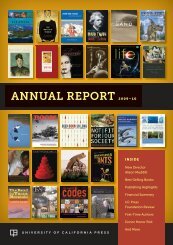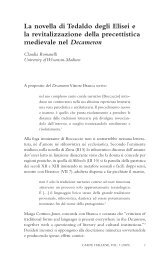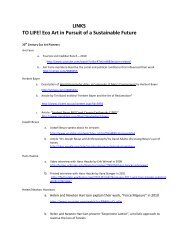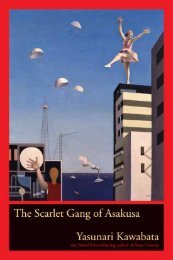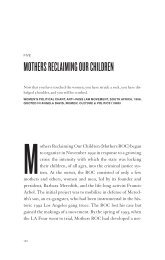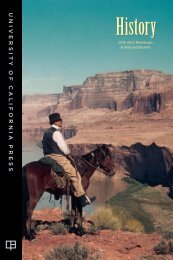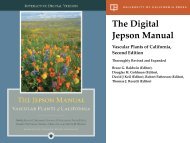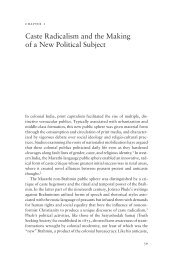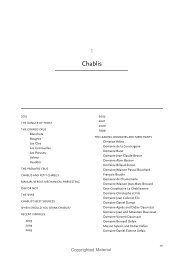Read Chapter 1 (PDF) - University of California Press
Read Chapter 1 (PDF) - University of California Press
Read Chapter 1 (PDF) - University of California Press
You also want an ePaper? Increase the reach of your titles
YUMPU automatically turns print PDFs into web optimized ePapers that Google loves.
east harlem 5<br />
are the housing projects. The drab, muddy brick monoliths seem naked<br />
and unfinished, like foundation posts for some impossibly larger building.<br />
And the taller, more obtrusive buildings not only disrupt the riot <strong>of</strong><br />
color; they also disrupt the orderly grid the older, smaller buildings work<br />
so hard to maintain. Organized around so-called superblocks, the housing<br />
projects razed micro-communities and closed <strong>of</strong>f streets to create<br />
building complexes centered on green spaces. Heralded as a miracle <strong>of</strong><br />
modern urban planning and a model for democratic housing, the projects<br />
were given names like Jefferson, Washington, and Johnson. But with<br />
no stores and no restaurants, the superblocks killed <strong>of</strong>f the street life and<br />
quickly turned their green spaces into some <strong>of</strong> the most fearsome real<br />
estate in the city. 4<br />
The steady march north past short blocks and narrow streets is<br />
arrested at 106th Street, the first <strong>of</strong> two wide, two-way streets that intersect<br />
the neighborhood. On the corner <strong>of</strong> 106th Street and Third Avenue<br />
there are the telltale signs <strong>of</strong> relatively recent economic investment: KFC,<br />
Blockbuster, and a shiny new chain pharmacy. But there are also the<br />
indelible marks <strong>of</strong> the Puerto Rican community, the midcentury immigration<br />
trend that turned East Harlem into Spanish Harlem and El Barrio.<br />
La Fonda Boriqua sits just behind Blockbuster Video, serving up<br />
Puerto Rican comfort food to the local literati. And just down the street,<br />
at Lexington Avenue, is the heart <strong>of</strong> Puerto Rican East Harlem.<br />
The 197-A Plan to revitalize East Harlem developed by the community<br />
board, calls the intersection <strong>of</strong> 106th Street and Lexington Avenue the<br />
“Cultural Crossroads.” On one corner stands the Julia de Burgos Cultural<br />
Center, a somewhat controversial private enterprise that houses an<br />
upscale art gallery, music studio, and performance space. On Thursday<br />
nights the renovated public school building plays host to “Julia’s Jam,”<br />
an open mike event for Bomba y Plena music and Nuyorican poetry. Just<br />
next door is the spiritual anchor for the Latino Catholic community, St.<br />
Cecilia’s Church. The large, ruddy red brick building dominates the<br />
block and still <strong>of</strong>fers most <strong>of</strong> its services in Spanish. St. Cecilia’s also<br />
houses Opus 118, the violin program made famous by Meryl Streep’s<br />
film Music <strong>of</strong> the Heart. Across the street is Metropolitan Studios, new<br />
home to Black Entertainment Television. Facing St. Cecilia’s Church and



